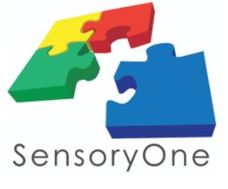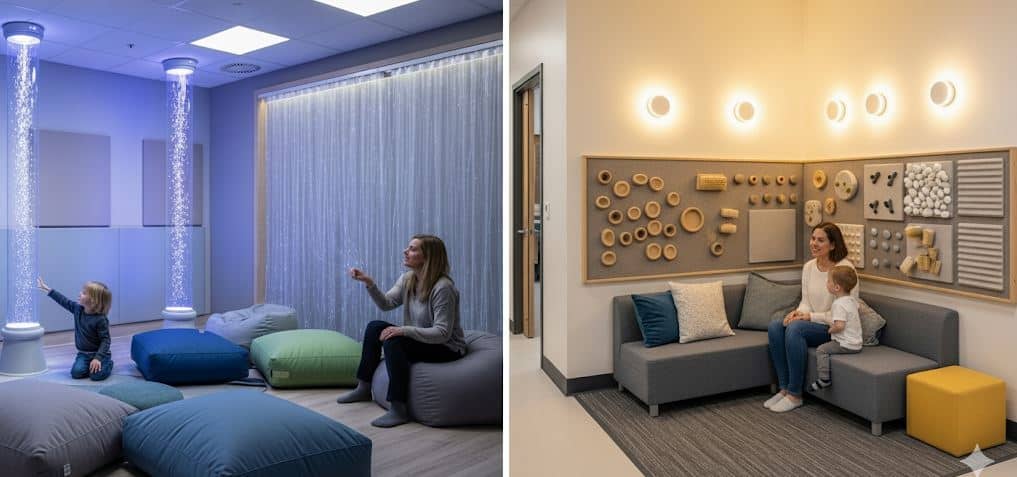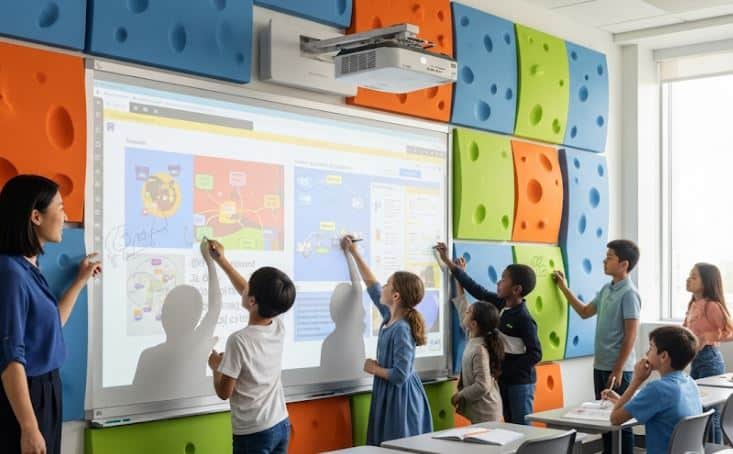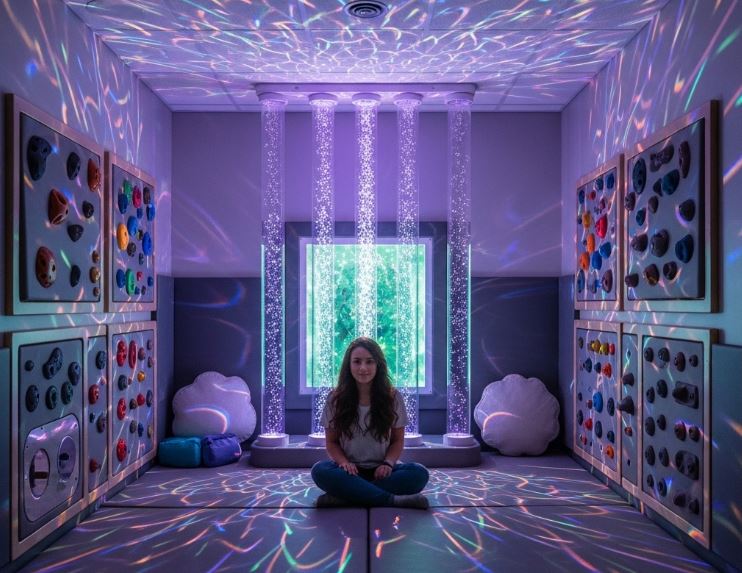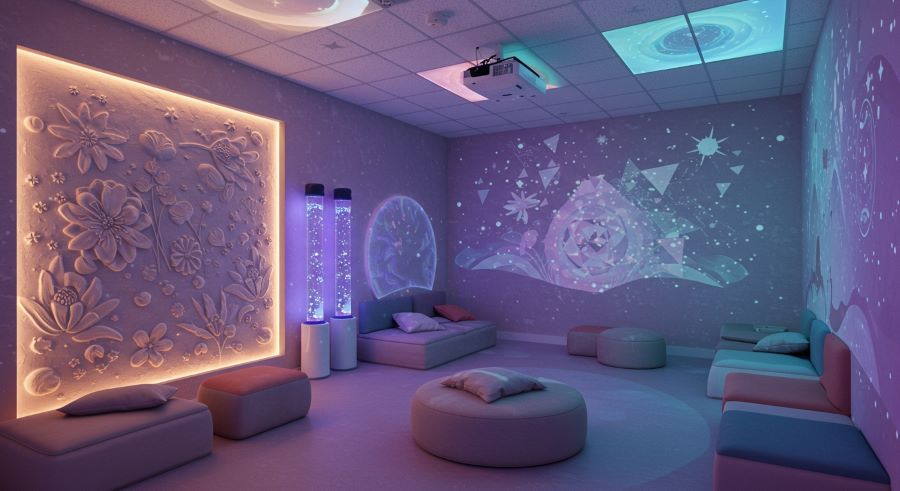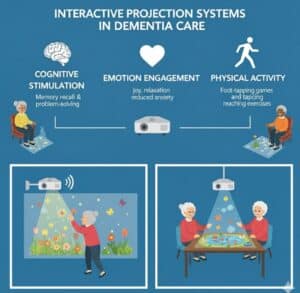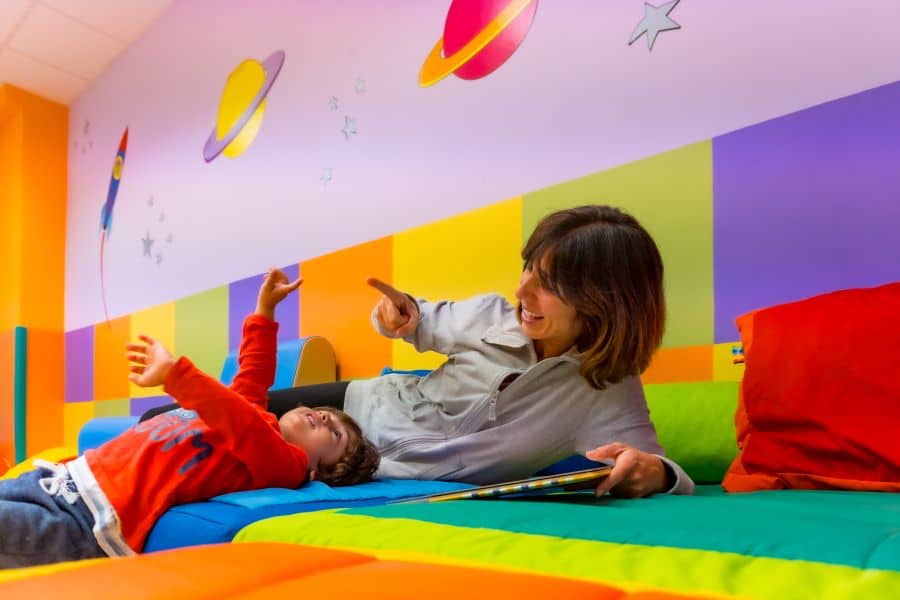When people hear the term sensory room, they often picture a dedicated, enclosed space filled with calming lights, textures, and interactive equipment. While that image is accurate, it’s only part of the story. Sensory environments today are evolving to include sensory spaces — flexible areas created in hallways, classrooms, waiting rooms, or even small corners — designed to offer many of the same benefits in a more adaptable way.
Whether you’re in a school, clinic, long-term care facility, or even at home, both sensory rooms and sensory spaces can play a vital role in supporting regulation, focus, and emotional well-being.
Did you know? At SensoryOne, we design both sensory rooms and flexible sensory spaces, making it possible to adapt environments to your unique care and educational needs.
What Is a Sensory Room?
A sensory room is a dedicated space intentionally designed to engage the senses. It often includes:
- Calming lights such as bubble tubes, fiber optics, or projection systems
- Tactile panels or wall features for touch exploration
- Comfortable seating like beanbags or loungers
- Interactive equipment to promote engagement, relaxation, or stimulation
Because it is a fully enclosed environment, a sensory room allows users to step away from overstimulating surroundings and experience a safe, supportive retreat. This setup is particularly valuable for children with autism, people with ADHD, seniors with dementia, and individuals recovering from trauma.
What Is a Sensory Space?
A sensory space is a more flexible environment, created within existing areas rather than a separate room. Common examples include:
- A calming corner in a classroom
- A hallway alcove with soft seating and wall panels
- Waiting rooms equipped with sensory-friendly lighting and interactive stations
- Portable pods or tents that can be set up and moved as needed
The goal is the same: provide a safe, soothing, or stimulating environment. But sensory spaces are adaptable, often requiring less budget and square footage than a full sensory room.
Key Similarities and Differences
Both sensory rooms and sensory spaces are designed to help regulate emotions, reduce stress, and encourage engagement. The difference comes down to scale and flexibility:
- Sensory Rooms
- Fully immersive, enclosed environment
- Greater ability to control light, sound, and atmosphere
- Typically requires more investment and planning
- Sensory Spaces
- Flexible, can fit into hallways, corners, or shared areas
- Budget-friendly and scalable
- Accessible for organizations with limited space
Both approaches are effective, and in many cases, organizations use a combination of both to meet diverse needs.
Why Both Approaches Are Effective
Research consistently shows that sensory environments can:
- Support self-regulation and reduce anxiety
- Improve focus and learning outcomes in schools
- Offer therapeutic benefits for individuals with dementia, autism, or sensory processing challenges
- Provide calming spaces in high-stress environments like hospitals or care facilities
For instance, the National Autistic Society highlights how tailored sensory settings can significantly reduce distress and improve quality of life for autistic individuals. Importantly, these benefits don’t depend on whether the environment is a large room or a smaller space — it’s the thoughtful design that matters.
Adapting to Your Environment and Needs
The beauty of sensory design is its adaptability. When planning your environment, consider:
- Available space: A full room might work in a school wing, while a small calming space might be ideal in a classroom.
- Budget: Sensory spaces can be a cost-effective way to introduce multi-sensory elements before expanding into a larger room.
- Population needs: Younger children may benefit from vibrant, playful elements, while seniors often prefer calming, reminiscence-focused designs.
- Flexibility: Portable sensory spaces allow for quick setup and breakdown, making them perfect for shared environments.
By assessing these factors, caregivers, educators, and administrators can create environments that fit their unique circumstances while still offering the proven benefits of sensory engagement.
The Bigger Picture: Inclusivity and Accessibility
What makes sensory design powerful is its inclusivity. A sensory room offers a retreat for those who need a controlled space, while sensory spaces ensure that support is accessible throughout the day, in everyday environments. Together, they represent a shift toward more inclusive and supportive communities where everyone has access to tools that enhance well-being.
Moving Toward Your Own Sensory Environment
Whether you choose a full sensory room or start with flexible sensory spaces, both can transform the way individuals experience learning, therapy, and care. Contact specialists to design environments that fit your needs — from immersive rooms to adaptable sensory corners — ensuring that every space has the power to calm, engage, and inspire.

